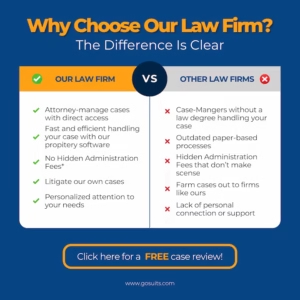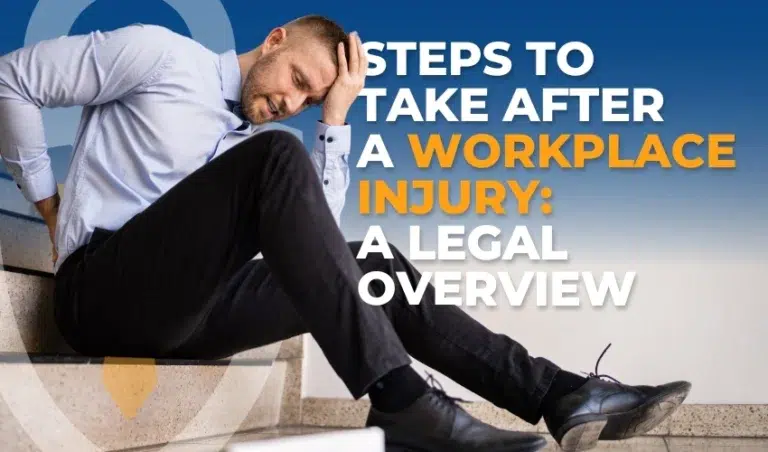A workplace injury can leave you with more than just physical pain—it can create financial stress, job uncertainty, and legal complications. When an employer does not carry workers’ compensation insurance, the situation becomes even more complex. Unlike traditional workers’ compensation cases, where benefits are automatically provided, non-subscriber cases require proof that the employer’s negligence contributed to the injury. Without the right legal strategy, injured workers may struggle to receive the compensation they need. Understanding the legal options available and how an attorney can assist in these cases is critical.
Why Is Seeking Medical Attention So Important?
After a workplace injury, medical care should be the top priority. Even if the injury seems minor, delaying treatment can lead to long-term health issues and complications with any legal claims. Medical records serve as the foundation for proving the extent of an injury, how it happened, and the ongoing impact on a worker’s ability to perform their job. In non-subscriber cases, an employer may argue that an injury was not severe or was unrelated to work. A work injury lawyer can help ensure that medical documentation supports a claim and that workers receive the treatment they need without unnecessary delays or disputes from an employer.
Do You Need to Report the Injury to Your Employer Right Away?
Reporting a workplace injury as soon as possible is essential, particularly in non-subscriber cases where an employer may attempt to dispute what happened. Without workers’ compensation, an employer may deny responsibility, claim the injury was pre-existing, or even suggest that the worker’s actions caused the accident. While an injured employee must inform their employer, the way the injury is reported matters. Providing only the necessary details and avoiding statements that could be misinterpreted can help protect a legal claim. A work injury lawyer can assist in ensuring that the injury is properly documented, minimizing the risk of an employer using the report against the injured worker.
How Do You Prove Employer Negligence in a Non-Subscriber Case?
Unlike workers’ compensation cases, where benefits are provided regardless of fault, non-subscriber cases require proving that the employer was negligent. This means showing that the employer failed to provide a safe work environment, did not properly train employees, or did not take reasonable steps to prevent the injury. Some of the most common forms of employer negligence include:
- Failure to provide proper safety equipment. If an employer does not supply the necessary protective gear, they may be held responsible for injuries that occur.
- Lack of proper training. When employees are not given the training they need to handle equipment or hazardous conditions, the risk of workplace accidents increases.
- Unsafe working conditions. Employers are responsible for maintaining a safe environment, including ensuring that machinery, tools, and workplace procedures meet safety standards.
- Ignoring workplace hazards. If an employer knew about a dangerous condition and did nothing to fix it, they may be found negligent in a legal claim.
An attorney handling non-subscriber cases can investigate the workplace conditions, gather witness testimony, and collect evidence to establish that an employer’s negligence led to the injury.

What If Your Employer Blames You for the Accident?
In non-subscriber cases, one of the most common defense tactics is to shift blame onto the injured worker. Employers may argue that the employee was careless, failed to follow safety protocols, or acted in a way that contributed to the accident. However, in many states, non-subscriber employers have limited defenses available, meaning they cannot automatically avoid liability by blaming the worker.
A legal claim may still be possible, even if an employer argues that the worker was partially responsible. An attorney can counter these arguments by demonstrating how the employer’s failure to provide a safe work environment played a significant role in the injury. Gathering workplace records, safety violations, and testimony from coworkers can help refute these claims and establish the employer’s responsibility.
What Can You Recover in a Non-Subscriber Case?
Unlike workers’ compensation claims, which are limited to covering medical expenses and partial lost wages, non-subscriber cases may allow injured workers to recover a wider range of damages. The exact amount depends on the specifics of the case, but legal claims in non-subscriber cases may seek compensation for:
- Medical expenses. This includes hospital visits, surgeries, medication, physical therapy, and ongoing treatment needed for recovery.
- Lost income. If an injury prevents a worker from returning to their job, they may be able to seek compensation for lost wages.
- Pain and suffering. Some workplace injuries result in chronic pain, emotional distress, or a reduced quality of life, which can be factored into a legal claim.
- Permanent disability. If an injury leads to a long-term or permanent disability, additional compensation may be available.
Because non-subscriber cases involve proving negligence, the amount an injured worker can recover depends on the strength of the evidence presented. A lawyer can evaluate what damages may be available and ensure that all financial and personal losses are taken into account.
What If Your Employer Retaliates Against You for Filing a Claim?
Some employees hesitate to report workplace injuries or take legal action because they fear retaliation. It is unlawful for an employer to fire, demote, or punish a worker for pursuing a legal claim related to a workplace injury. However, retaliation can still happen, and it often takes more subtle forms, such as reduced work hours, changes in job duties, or increased scrutiny from supervisors.
If an employer retaliates against an injured worker, legal options may be available to challenge these actions. Retaliation claims often require legal documentation, including employment records, witness statements, and performance reviews, to establish a pattern of adverse treatment following an injury. A work injury attorney can help build a case and take the necessary legal steps to protect a worker’s rights.

Why Is It Important to Involve a Lawyer Early in a Non-Subscriber Case?
Without legal guidance, many injured workers struggle to navigate the complexities of a non-subscriber case. Unlike workers’ compensation claims, where benefits are processed through an administrative system, non-subscriber cases require a legal claim that proves employer negligence. This means gathering evidence, meeting legal deadlines, and responding to employer or insurance company defenses.
Early legal involvement can assist with the following:
- The injury is properly documented, reducing the risk of employer disputes.
- Witness statements, workplace records, and safety violations are collected before evidence disappears.
- Negotiations with the employer or their insurance provider are handled professionally, preventing unfair settlement offers.
- Legal arguments are prepared in case the employer attempts to avoid liability by shifting blame.
Each workplace injury case is unique, and the best legal strategy depends on the specific circumstances of how the injury occurred. Seeking legal assistance early allows injured workers to focus on their recovery while having their legal rights protected.









